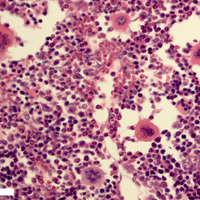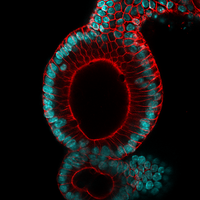Login
Subscribemouse model, disease & medicine, cell & molecular biology

Special Schwann Cells in Mice Play Unsung Role in Pain
Nicoletta Lanese | Aug 16, 2019 | 2 min read
The glia seem to make up part of a newly described sensory organ, the discoverers suggest.

Image of the Day: Neon Tissue
Chia-Yi Hou | May 31, 2019 | 1 min read
See a mouse organoid imaged using two-photon microscopy.

Image of the Day: Powerful Protein
Chia-Yi Hou | Apr 25, 2019 | 1 min read
An experiment tests whether a protein treatment can help hematopoietic stem cells recover after mice are exposed to radiation.

Image of the Day: Colorful Colonoids
Chia-Yi Hou | Apr 18, 2019 | 1 min read
Organoids grown from a mouse’s colon will be used to screen drugs for colorectal cancer.

Image of the Day: Tuft Cells
Chia-Yi Hou | Apr 3, 2019 | 1 min read
After a severe case of flu, mice have chemosensory cells in their lungs, a place where they don’t normally occur.

Exosomes Linked to Cancer Spread from Chemoresistant Tumors in Mice
Carolyn Wilke | Jan 10, 2019 | 4 min read
The vesicles promote metastasis after chemotherapy, but the authors say the results shouldn’t alarm patients and may point to ways to improve treatments.

Image of the Day: Switch Gears
Sukanya Charuchandra | Sep 10, 2018 | 1 min read
A gene responsible for the free-moving, primitive nature of fetal cells is expressed in some breast cancer cells in mice and humans.
